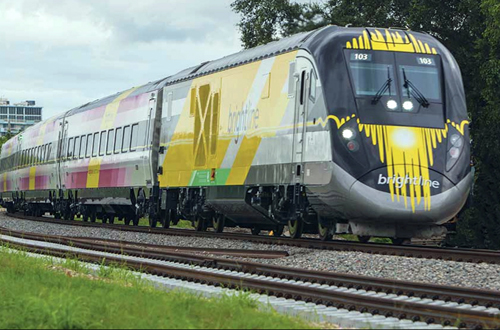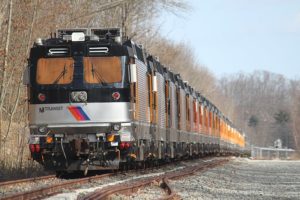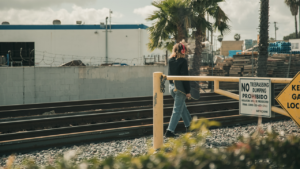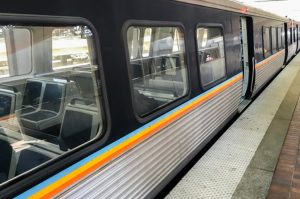Editorial: Brightline doing what it can to curb fatalities on the tracks
Written by RT&S Staff
So what will happen if I inch just a little closer? Will I see a camera flash? Will sirens start blaring? Will I instantly become a cloud of dust? I’m a little nervous … so … I … will … take … it … real … slow. OK, I’m still in one piece, now to just check around to see if the National Guard is not barreling to my vehicle.
Honestly, that was my first reaction when I saw dynamic envelopes lying across the pavement surrounding a rail crossing in downtown Elgin, Ill. They look nothing like envelopes, more like a DO NOT ENTER zone, but I who am I to question a wordsmith? Pot, kettle, black.
The Florida Department of Transportation (FDOT) was not mincing words when it released a dynamic envelope initiative across the state to help prevent accidents at rail crossings. The call to action is the result of one too many deaths on Brightline’s regional transit line from Miami-to-West Palm Beach. The 80-mph bullets are not something pedestrians and motorists are used to seeing in the U.S. Usually when you see that white light off in the distance you know there is a couple of minutes left of a safe crossing, as long as the gates are not down. I’m a wordsmith, not a physicist, but even I know that if a train is traveling 30 mph faster those couple of minutes are almost cut in half.
FDOT’s red alert is an important first step here. Of course, every railroad crossing should make it obvious that there is a point of noreturn on the pavement, and it should be marked with aggressive striping and signs. However, that is only a fraction of the problem. Most of the deaths on Brightline’s track have involved trespassers, and some were suicidal. Dynamic envelopes are powerless here. Brightline has been accused of not building fences to separate flesh from fast-moving steel because, you know, once a 6-ft fence is installed nobody is going to climb over it. Nah, nobody will try that crazy stunt. Constructing pedestrian bridges also is on the table. Not only are those types the Tiffany’s of bridges (massively expensive), but they still will not stop those who want to end their life or those who are just plain lazy. Brightline did receive a $2.37 million grant from the Federal Railroad Administration for the South Florida East Coast Rail Corridor Intrusion Protection Project. The wordsmith in me says an acronym is sorely needed here, but the funding includes supplemental safety features to 48 grade crossings from West Palm Beach to Miami. Also in the testing phase is a system that uses drones with two-way speakers to shoo trespassers off the tracks (the robots, they are coming!) and infrared fencing. Infrared fencing just might be the genius behind this entire effort. I am assuming the cost is less than constructing miles and miles of fencing, and if it does trigger an alarm people just might be saved. I do not know who will be there to do the saving. An alarm in the locomotive is useless at those speeds, unless the signal is picked up miles away. That’s a problem for another genius to solve.
So is all this brainstorming on rail safety coming too late? Forty people have been killed on Brightline territory, but there simply is no telling if anything could have prevented all of those deaths. What is important now is Brightline, FDOT and others are doing everything in their power to curb the fatalities. Perhaps what we need are DANGER signs that warn of instant vaporization with a wrong step. It would not really happen, but I certainly would not want to test it out by inching closer.





